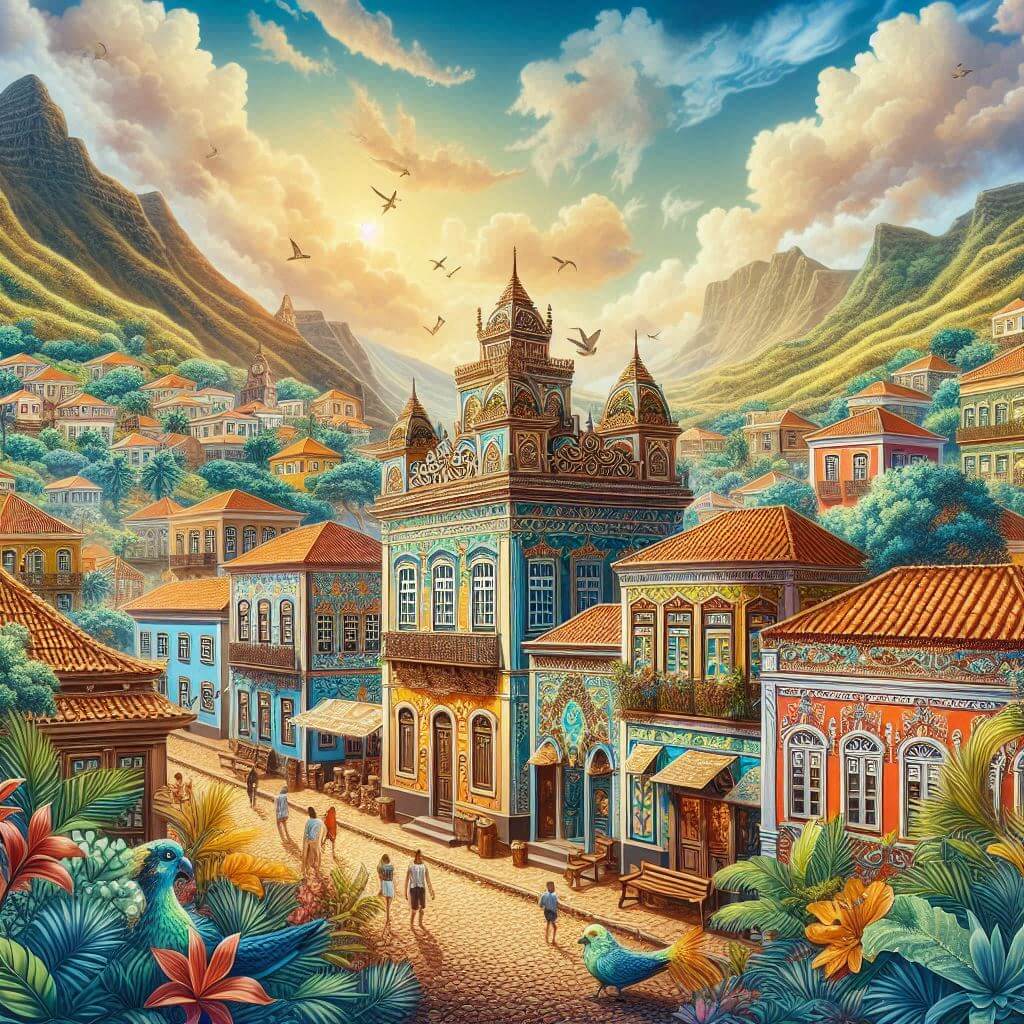The flag of Cabo Verde consists of a blue field with a horizontal stripe of white and red, and a circle of ten yellow stars on the hoist side. This vibrant design encapsulates the nation's maritime heritage, unity, and aspirations for progress.
Cabo Verde information
| National Flag Day | — |
| Sovereign state | Yes |
| Official name | Republic of Cabo Verde |
| Capital | Praia |
| Population | 549,935 |
| Area | 4,033 km² |
| Currency | Cabo Verdean escudo (CVE) |
| Language | Portuguese, Cape Verdean Creole |
| Continent | Africa |
| Region | West Africa |
| Subregion | — |
| Borders | — |
| Timezone | Cape Verde Time (CVT) UTC-1 |
| Calling code | +238 |
| Top-level domain | .cv |
History of the Cabo Verdean Flag
 The current flag of Cabo Verde was adopted on September 22, 1992, following the country's transition to a multi-party democracy. It replaced the previous flag used since independence from Portugal in 1975, which featured a design similar to that of Guinea-Bissau. The new flag was designed to better represent Cabo Verde's unique identity and its vision for the future.
The current flag of Cabo Verde was adopted on September 22, 1992, following the country's transition to a multi-party democracy. It replaced the previous flag used since independence from Portugal in 1975, which featured a design similar to that of Guinea-Bissau. The new flag was designed to better represent Cabo Verde's unique identity and its vision for the future.
Symbolism and Design of the Cabo Verdean Flag
The flag of Cabo Verde is rich in symbolism, reflecting the nation's geography, history, and aspirations. The blue background symbolizes the vast Atlantic Ocean that surrounds the archipelago, highlighting Cabo Verde's maritime heritage and its reliance on the sea for sustenance and prosperity. This blue also represents the sky, embodying the spirit of openness and infinity.
The horizontal stripe consists of two colors: white and red. The white symbolizes peace and unity, values deeply cherished by the Cabo Verdean people. The red represents the nation's determination and the efforts made towards economic progress and development. Together, these colors signify the path Cabo Verde is taking towards a brighter future.
Perhaps the most distinctive feature of the flag is the circle of ten yellow stars on the hoist side. These stars represent the ten main islands that make up the Cabo Verde archipelago: Santo Antão, São Vicente, Santa Luzia, São Nicolau, Sal, Boa Vista, Maio, Santiago, Fogo, and Brava. The circular arrangement of the stars symbolizes the unity and solidarity among these islands, despite their geographical separation.
Usage and Significance of the Cabo Verdean Flag
 The flag of Cabo Verde is a source of national pride and identity. It is prominently displayed on government buildings, schools, and public institutions. During national holidays such as Independence Day (July 5) and Constitution Day (September 3), the flag is widely flown across the country. It also plays a crucial role in international events, representing Cabo Verde in diplomatic missions, sports competitions, and cultural exchanges.
The flag of Cabo Verde is a source of national pride and identity. It is prominently displayed on government buildings, schools, and public institutions. During national holidays such as Independence Day (July 5) and Constitution Day (September 3), the flag is widely flown across the country. It also plays a crucial role in international events, representing Cabo Verde in diplomatic missions, sports competitions, and cultural exchanges.
Interesting Facts About the Cabo Verdean Flag
- The ten yellow stars on the flag represent the ten main islands of Cabo Verde, arranged in a circle to symbolize unity and solidarity.
- The design of the flag underwent several revisions before its current form was officially adopted in 1992, reflecting the evolving aspirations and identity of the nation.
- The flag's colors – blue, white, red, and yellow – are often incorporated into national dress and cultural celebrations, further emphasizing their significance in Cabo Verdean identity.
- Cabo Verde is one of the few African countries to feature stars on its flag, making it visually distinctive among continental nations.
- The flag's design draws inspiration from the European Union flag, reflecting Cabo Verde's close ties with Europe and its aspirations for international cooperation.